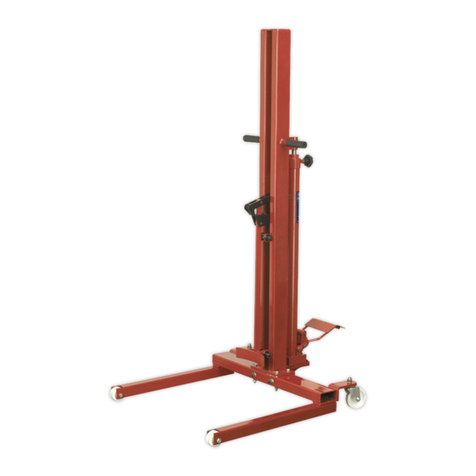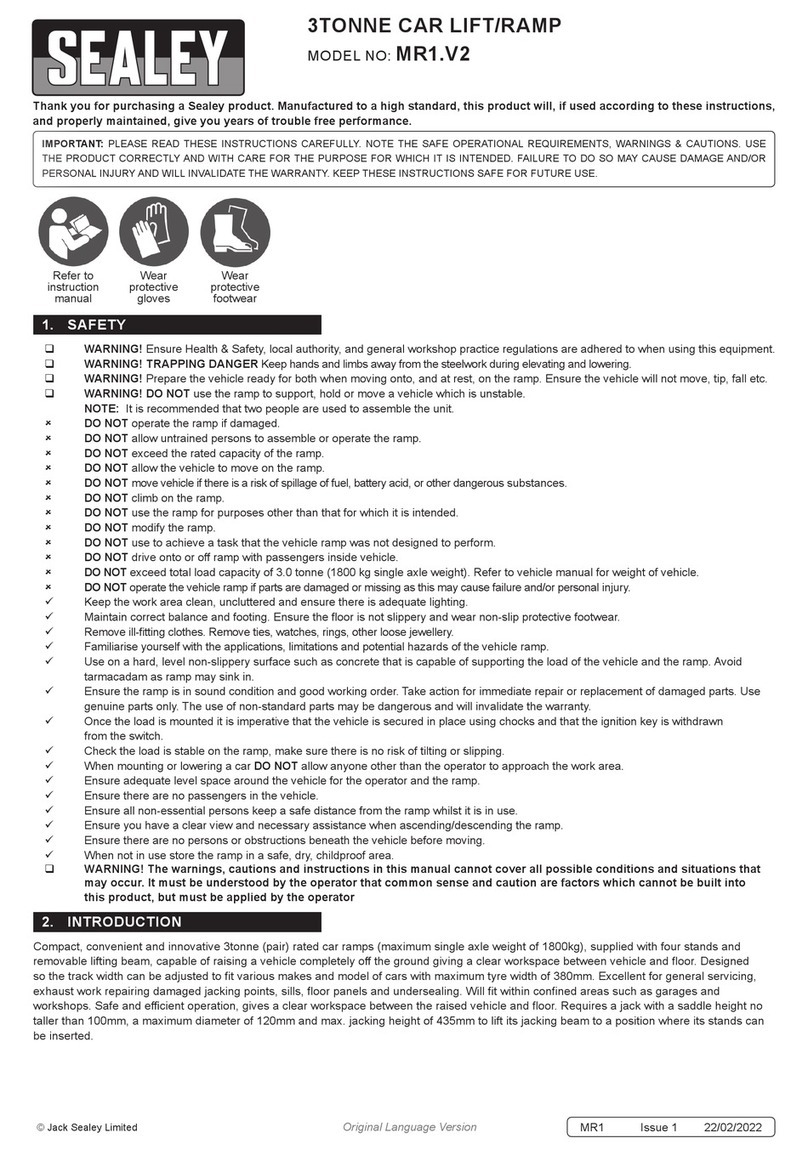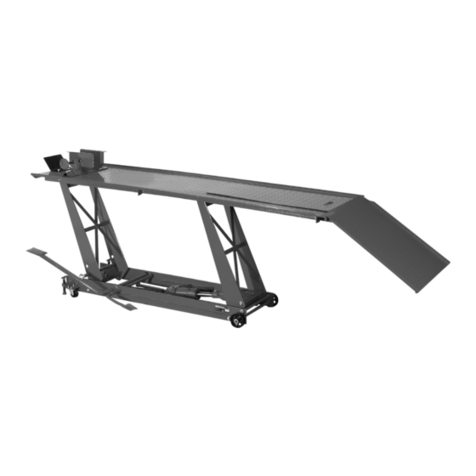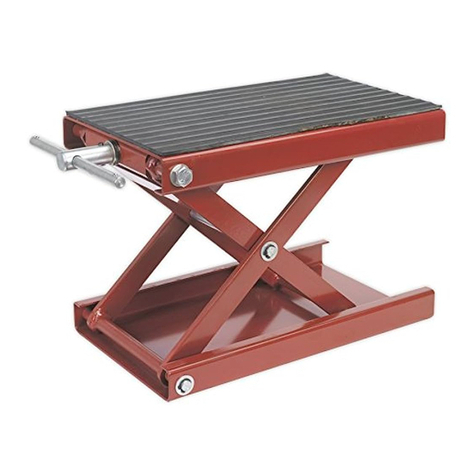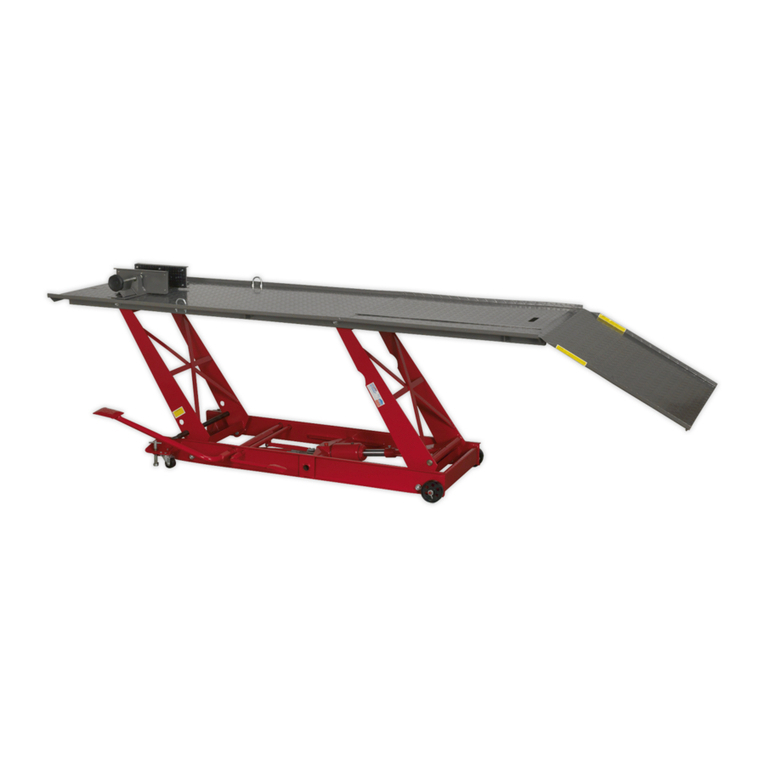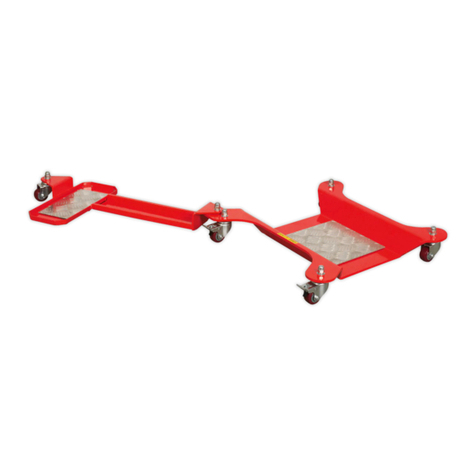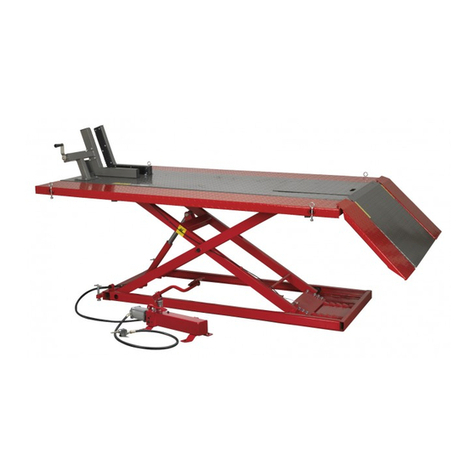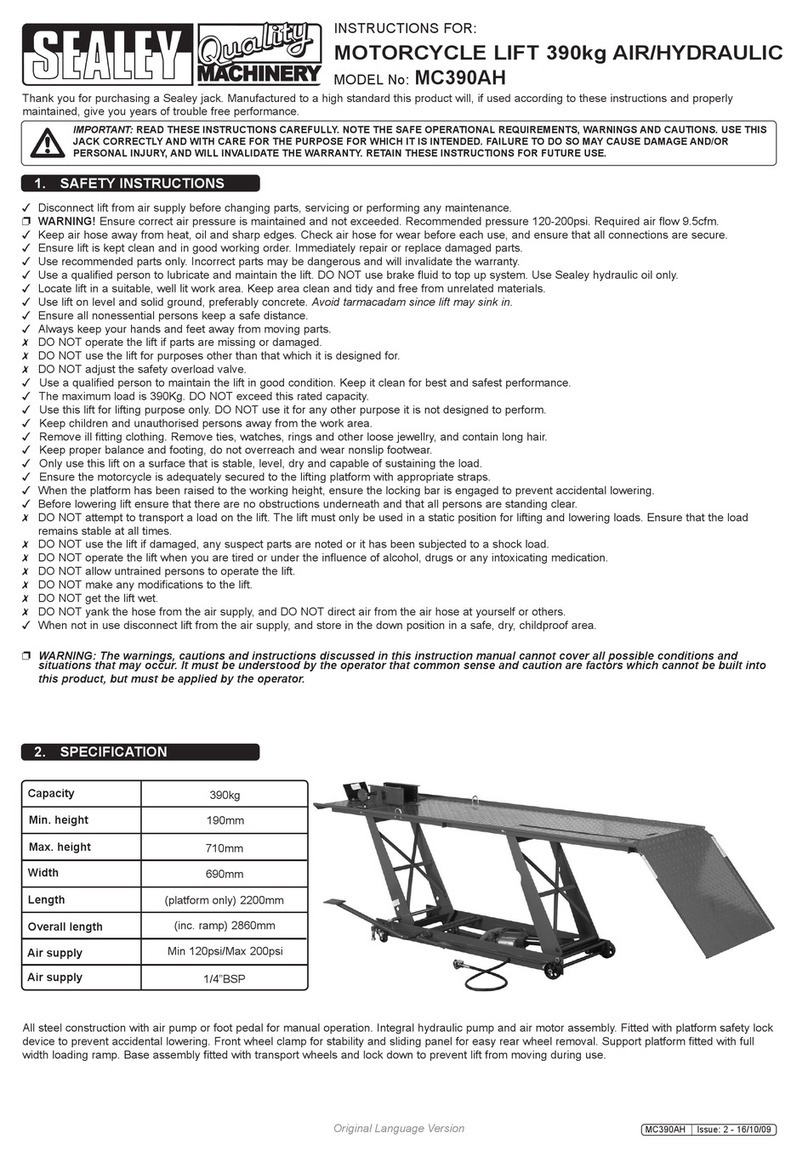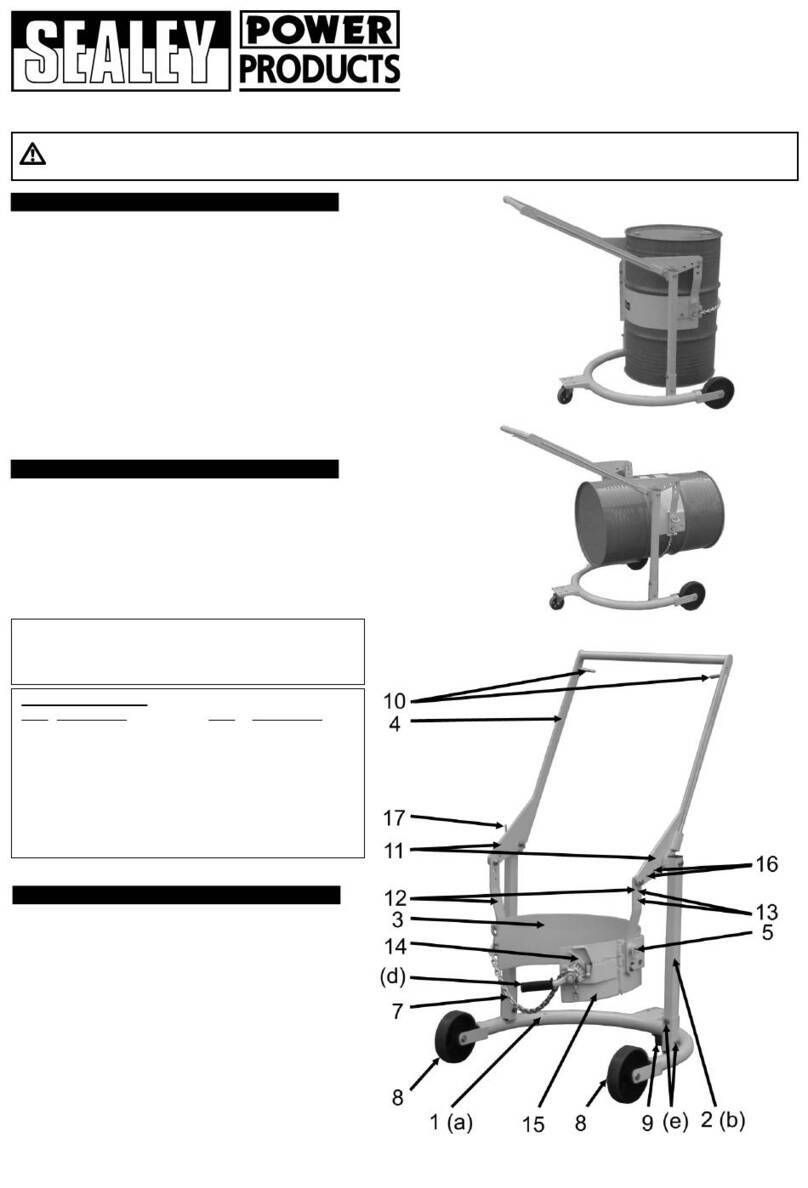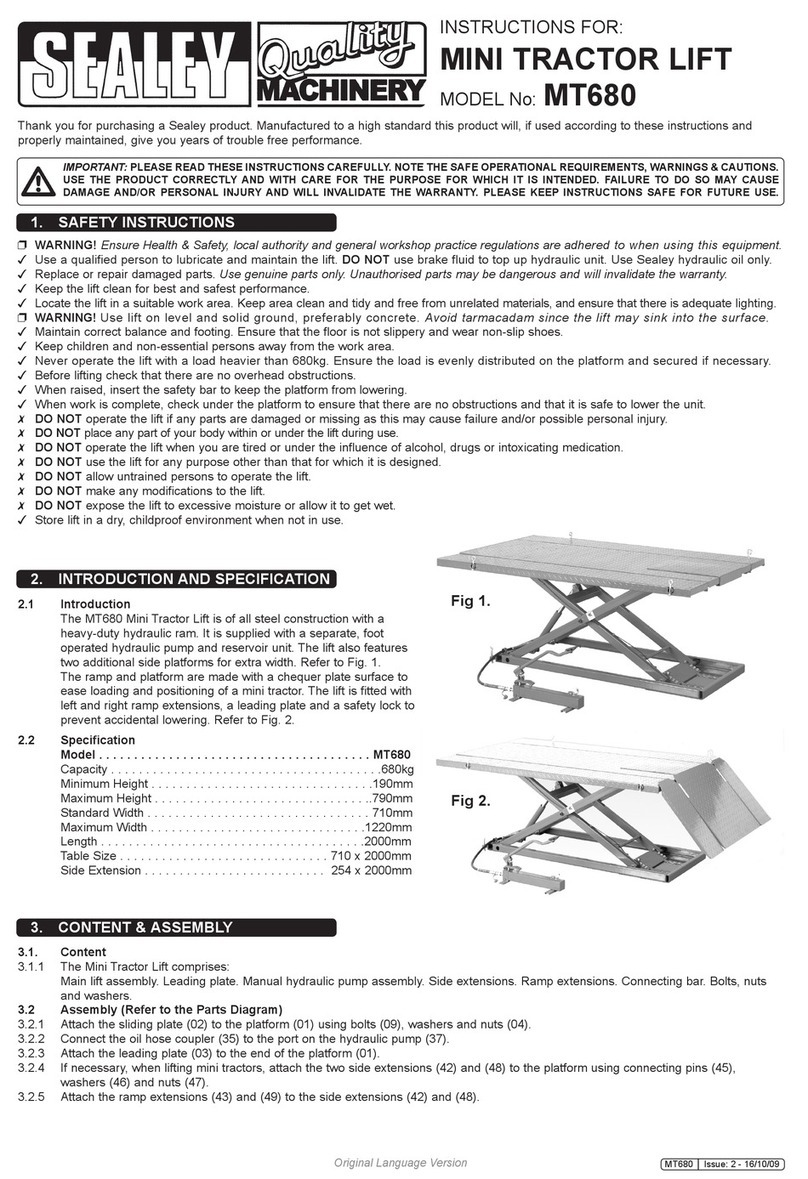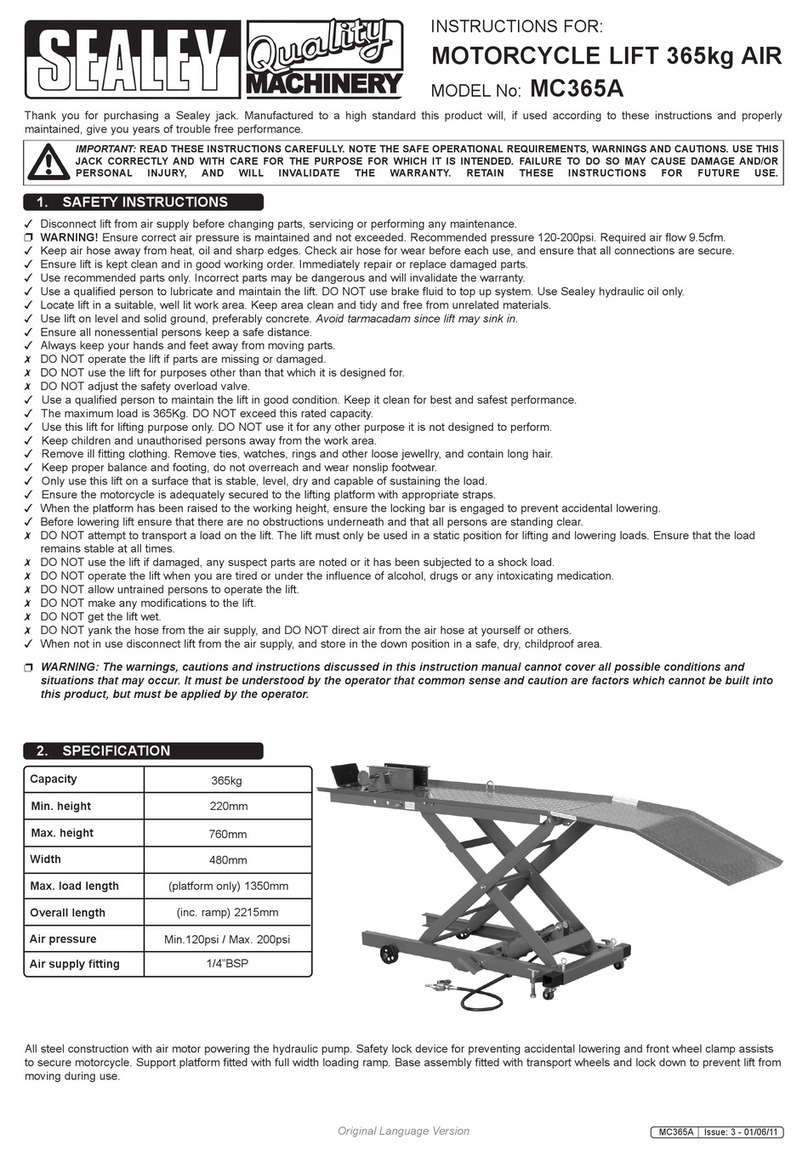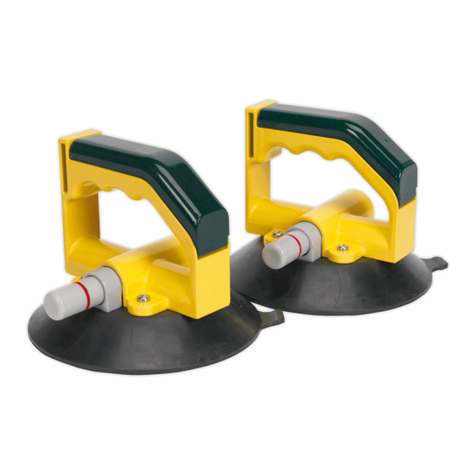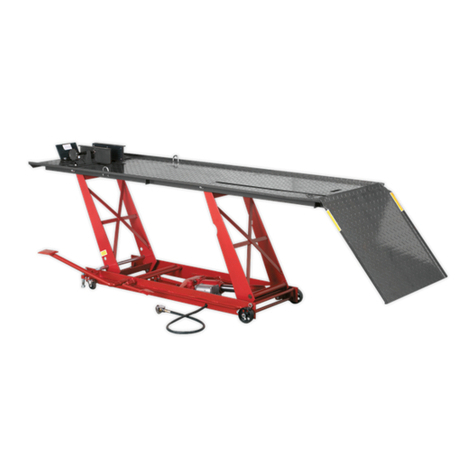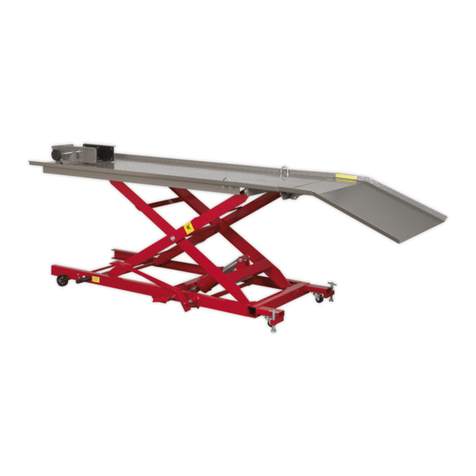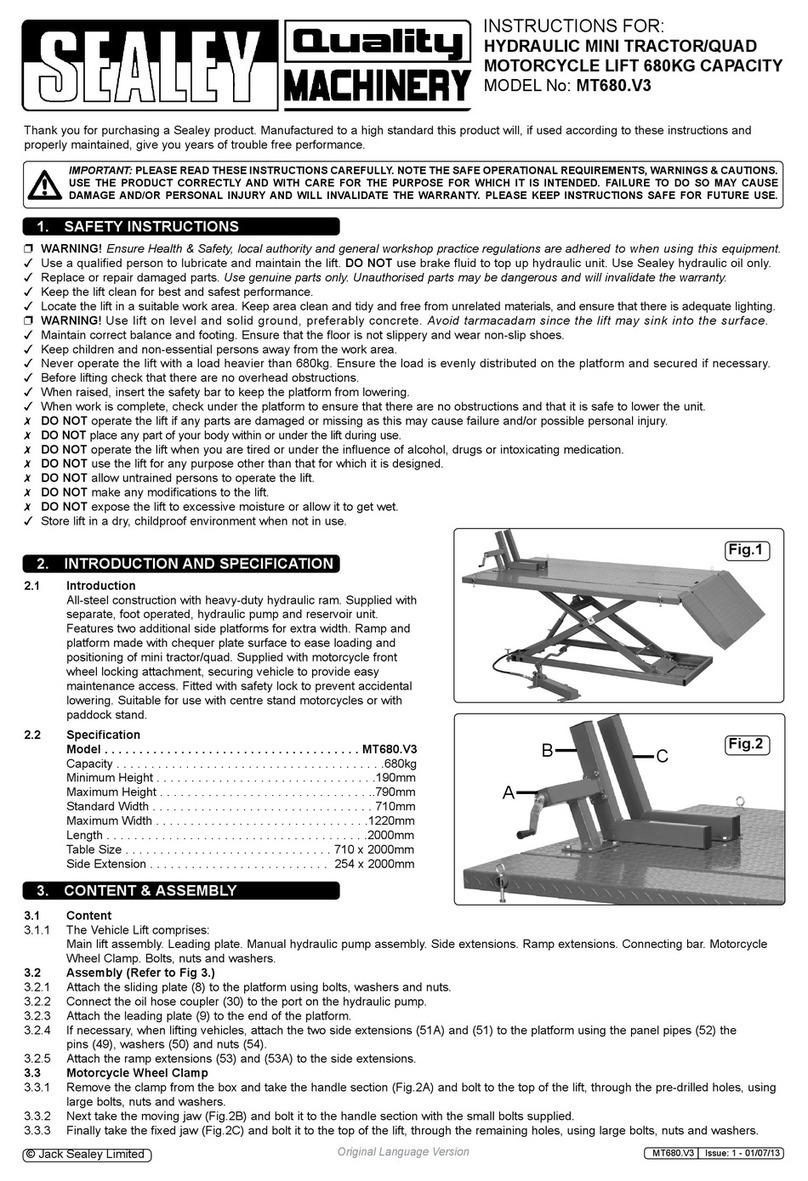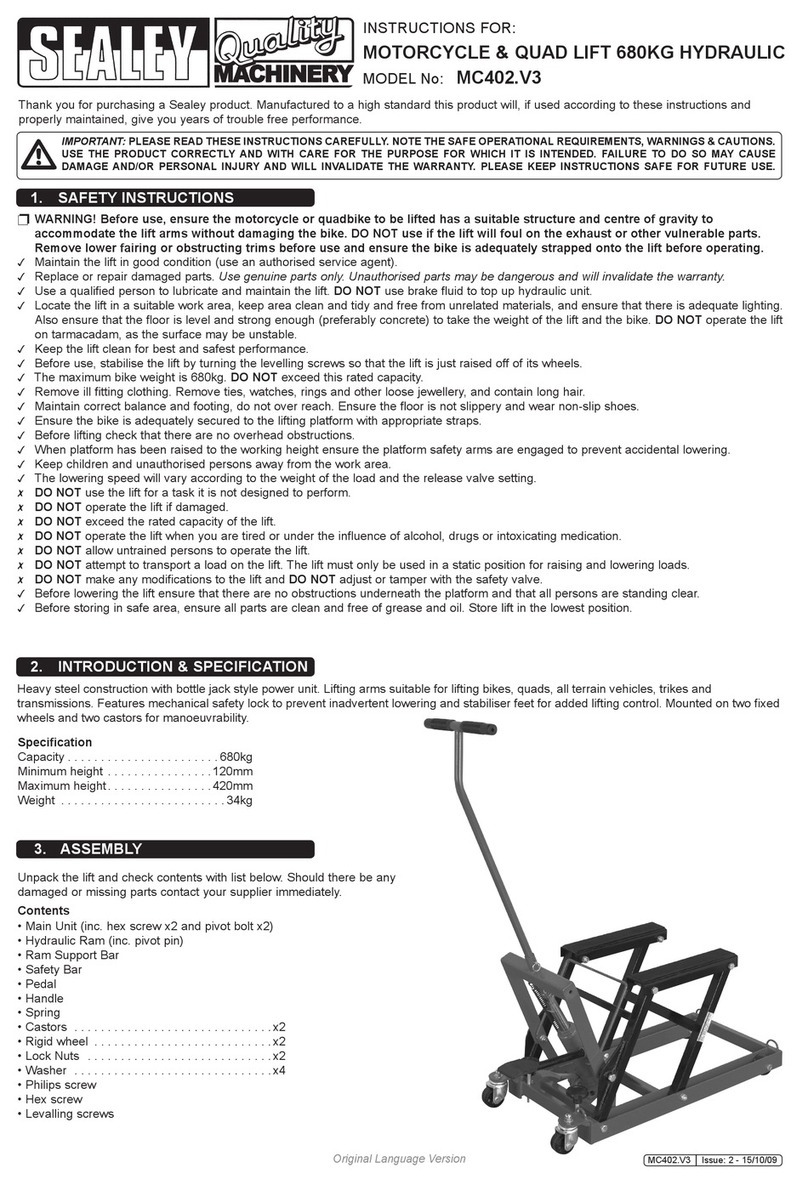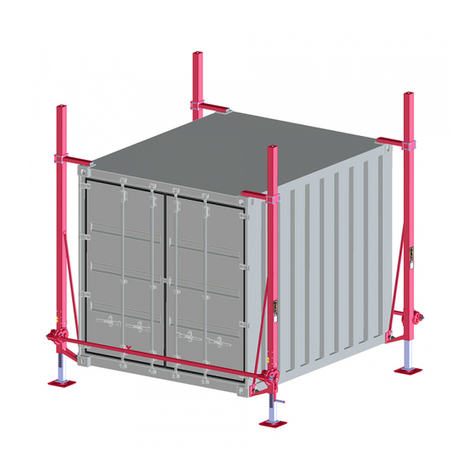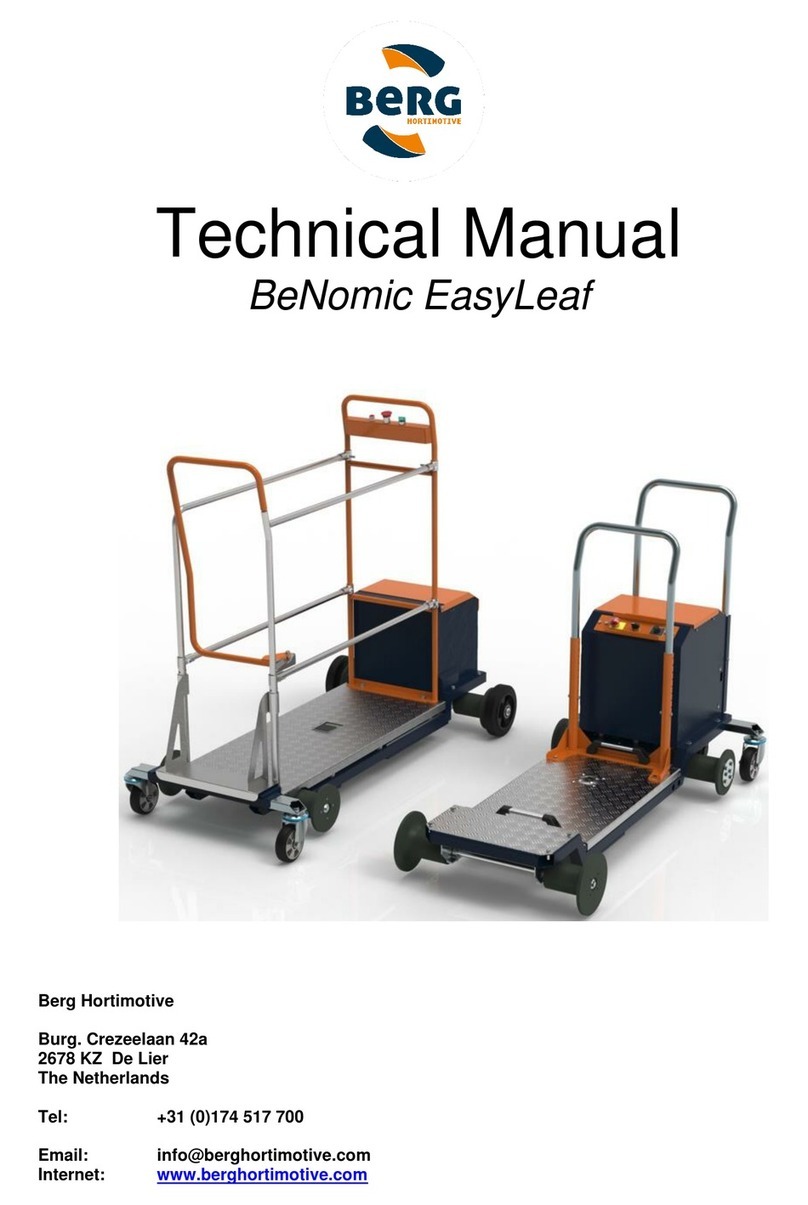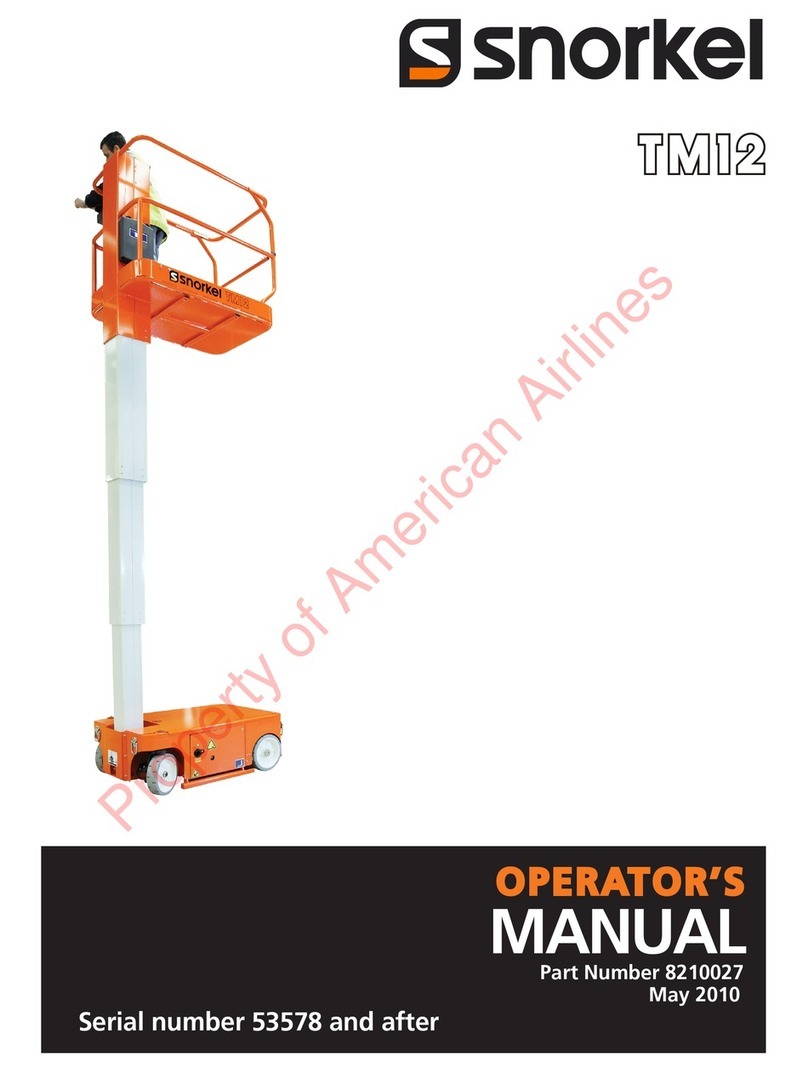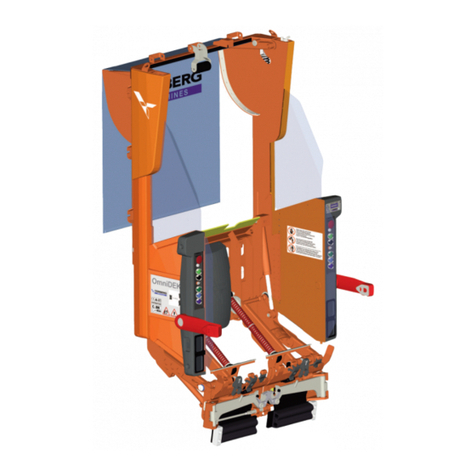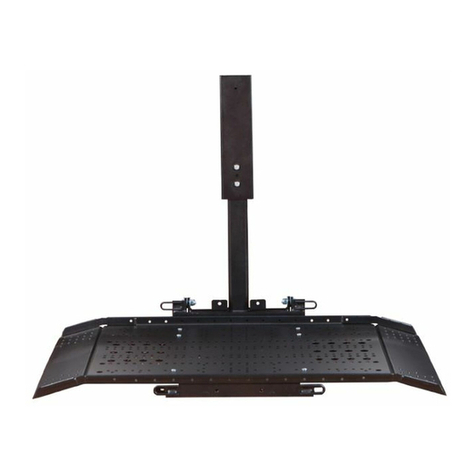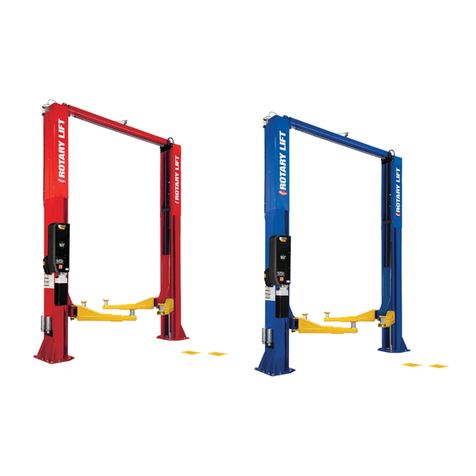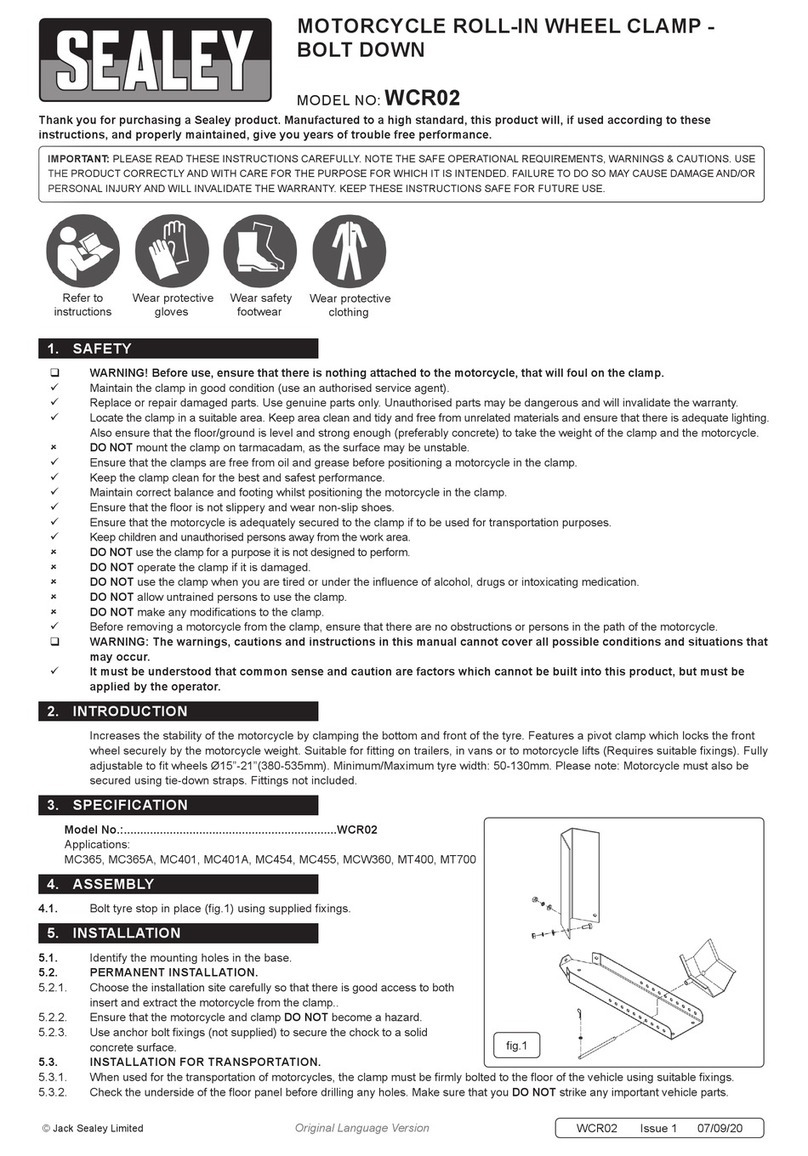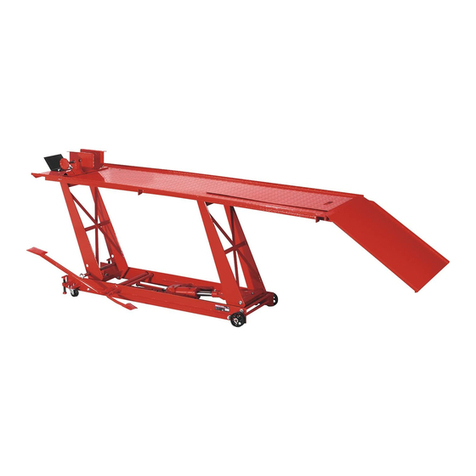
WARNING! Ensure that you read, understand and apply the
safety instructions before use.
WARNING! DO NOT attempt to overload the lift.
5.1 Position the lift in a suitable area, checking that the surface on
which the lift will stand is solid and flat (preferably concrete).
Bleeding the system: Whilst removing the oil ller plug from
the ram the lift must have the safety locking locking bar
engaged. Remove the locking bar pin shown in g.6B. Using the
main foot pedal (see g.2A), raise the platform until the locking
bar rides over the rst locking bar stop (see g.6). Press the
slow descent pedal (see g.2B) and allow the locking bar to
settle fully against the stop.
5.2.1 Remove the oil ller cap from the side of the ram as shown in
g.2D.
5.2.2 Raise the lift slightly so that the locking bar is no longer under
pressure. Using the locking bar lever (see g.6C) raise the
locking bar to the horizontal position and insert the locking bar
pin. Press the slow descent foot pedal (see g.2B) and allow
the lift to settle to its lowest position so that the ram is fully
retracted.
5.2.3 Fully open the release valve by depressing and holding down
the fast descent pedal (see g.2C). Now pump the main foot
pedal 6 to 8 strokes. This will help release any pressurised air
which may be trapped within the reservoir.
5.2.4 Raise the platform again, engage the safety locking bar and
reinstall the oil ller plug.
5.2.5 Check to ensure that the pump operates smoothly before
putting into service. Lubricate as instructed in the Maintenance
Section.
5.2.6 Inspect before each use. Do not use if any components are
bent, broken or cracked. components are noted.
5. OPERATING INSTRUCTIONS
All steel construction with foot operated, integral hydraulic
pump and ram assembly. Fitted with platform safety lock device
to prevent accidental lowering. Bike fixed by front wheel clamp,
in addition, four eyelets allow tie downs to be used for added
stability. Fitted with tyre width loading ramp. Base assembly
fitted with transport wheels allowing lift to be moved in
horizontal or vertical position. Can be stored in an upright
position to save space when not in use.
4. INTRODUCTION
fig.2
fig.3
fig.4
5.3 Loading a motorcycle: Lay the lift on a smooth flat surface
such as concrete. Press and hold down the fast decent pedal
to ensure that the ram is fully retracted and the lift is therefore
in its lowest position.
5.3.1 Extend the rear section of the platform by removing the
locking pins from the middle of the platform and pulling the
extension out until the holes in the end of the extension piece
are in line with a second set of holes for locking in the
extended position. Insert the pins to lock the extension piece.
5.3.2 Hook the loading ramp into the two slots at the end of the
extension piece and allow the free end to rest on the ground.
5.3.3 When the bike is fully on the ramp the front wheel will be
retained between the front wheel attachment (C) and the
closed wheel chock (A) as shown in fig.4. The position of the
wheel chock can be altered to cater for different diameter
wheels by placing the pivot bolt in one of four positions as
shown in fig.3. If the front wheel is not held firmly between
the wheel chock and the front wheel attachment remove the
motorcycle from the ramp and move the chock closer to the
front wheel attachment.
5.3.4 The motorcycle must be loaded onto the centre of the loading
ramp. Failure to do this could result in the motorcycle falling
from the ramp resulting in serious injury to the operator and/
or damage to the ramp or motorcycle.
5.3.5 Ensure the wheel chock is in the ready position to receive
the motorcycle front wheel as shown in fig.3A.
5.3.6 Standing beside the motorcycle, push it up the ramp and
all the way up onto the platform. As the front wheel on the
motorcycle passes over the open wheel chock, the wheel
chock will rotate forwards. The front tyre of the motorcycle
will now be pushing down on the wheel chock, which will
rotate it into the closed position. This causes the wheel chock
to clasp the front wheel of your motorcycle in place, holding
the motorcycle upright. This is NOT a substitute for securely
tying the motorcycle onto the Lift using LOCKING RATCHET
STYLE TIE DOWN STRAPS. Please ensure that the tie
down straps are locked in place and hold the motorcycle
safely on the Lift. Failure to correctly and safely tie the
motorcycle in place will invalidate the warranty and may
cause injury or death in the event that the motorcycle was to
become dislodged from the lift.
5.4 Correct Tie-down Procedure:
5.4.1 Attach one end of the ratchet tie downs to the handlebars or
fork area. Connect the other end of the straps to the forward
outrigger tie-down rings. Ratchet the tie-down straps to
compress the motorcycle suspension until the motorcycle is
secure. This will typically require that you compress the front
suspension on your motorcycle to approximately 75% of its
full travel.
5.4.2 Secure the rear of the motorcycle in a similar manner using
an attachment point such as the frame, swing arm, passenger
foot rests e.t.c. Attach the other end of the straps to the rear
outrigger tie-down rings, and ratchet until motorcycle is
secure. Again, this will require you to compress the rear
suspension on the motorcycle until there is no possibility that
the motorcycle could become dislodged.
Original Language Version MC450 Issue: 2 - 15/10/09
